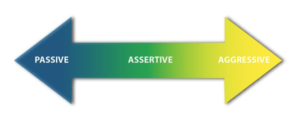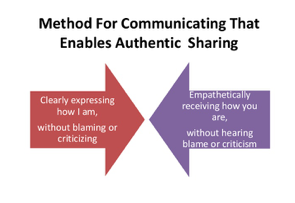Wise Online - View Week
Week 6- Compassionate Communication (Improving the Relationship to Self & Others)
WISE Recap
- Those who have greater self-compassion report much better mental health and adaptive resilience.
- The way we communicate with ourselves, sets the tone for how we communicate with others
- It’s OKAY to not be OKAY.
- Be your own best friend. Give yourself a break!
- It is about observing your feelings without judging them.
- Notice any resistance to loving yourself unconditionally and being kind to yourself and know it’s okay to have this resistance. Plant a seed of friendliness towards yourself today and watch it grow.
- Self-Compassion is crucial for helping you get back in your window (we learnt this last week). Be kind to yourself. Honour your feelings. Remember you are doing a great job. You are doing the best you can and that is always enough. Sometimes it takes a little while to get back in your window, sometimes we need some professional help to get back in there. But remember the sun will come out again and you WILL get there.
- Listen deeply to understand. Listen from the centre of your chest with your giraffe heart. Paraphrase. Check understanding.
Mindful Communication
The essence of communicating mindfully is about cultivating empathy, understanding and respect. It’s a practice devoted to pausing; noticing the breath; identifying and expressing feelings, needs, and expectations with care and respect; and listening for the same in others.
Compassionate communication (also known as NVC non-violent communication) helps us remain empathetic with each other, even in situations fraught with anger or frustration. Mindfulness, with its inherent focus on being present and non-judgmental, seems particularly suitable for promoting the quality of communication and dealing with conflict.
To be assertive, you need to learn to engage in healthy conflict. Healthy conflict directly and constructively addresses the issue at hand without ignoring the needs of either party. The strategies that follow will get you there.
Effective communication with those who we disagree with is extraordinarily difficult. If you are like most people, you have a fall-back strategy to deal with conflict that was learned early in life, one that is habitual and embedded in interactions with others.
The three most common strategies are:
- Accommodate (“be nice”)
- Demand (“me first”)
- Withdraw (“I don’t care”)

There is a fourth way, one that involves investigating both your world and the other person’s world, that can sometimes yield a surprising and creative solution that honours both parties. In the martial art, Aikido, this would be called blending, a move that harms neither party and turns conflict into more of a dance than a fight. This is complex and an art form in itself, and forms the basis of Marshall Rosenberg’s Non-Violent Communication (NVC), something that is introduced this week.
Mindful non-violent communication (NVC) consists of three facets:
(a) being present and paying attention in conversations.
(b) an open, non-judgmental attitude.
(c) a calm, non-impulsive manner.

NVC is often referred to as ‘giraffe language’. The giraffe is the land animal with the biggest heart. With their long neck the giraffe has a good overview and clear vision. ‘Giraffe heart’ stands for compassionate communication.
NVC guides us to reframe how we express ourselves and how we hear others. Instead of habitual, automatic reactions, our words become conscious responses based firmly on awareness of what we perceive, feel and want in that moment.
Within the framework of NVC, we’re led to express ourselves with honesty and clarity, while simultaneously paying others a respectful and empathic attention. In any exchange, we come to hear our own deeper needs and those of others. NVC trains us to observe carefully, and to specify behaviours and conditions that are affecting us. The form is simple, yet powerfully transformative.
Mindful Listening
We are asked to lead a life of honest expression, which starts with listening as a way to remember what matters, to name what matters, and to voice what matters. These are the practices that keep us authentic.” ~ Mark Nepo, Seven Thousand Ways to Listen.
Most people do not listen with the intent to understand- they listen with the intent to reply. Adopting a mindful approach to communication has many benefits including shared understanding, strengthened relationships, deepened trust, and a keen awareness.
Take your communication to a new level by being mindful as you speak and listen:
- Be fully present.
- Listen attentively, from your mid-chest rather than just your ears.
- Deeply understand before evaluating. Don’t be quick to jump to an assumption or conclusion.
- Respond appropriately. Not only with your words, but with your entire body, being mindful of what you say, how you say it, and what you show in your facial expressions and body movements.
WEEKLY PRACTICE TASKS
INFORMAL PRACTICE- Mindful Listening
The informal practice this week is to use conversation as an opportunity for ongoing meditation practice. Listening mindfully to your colleagues, friends, family, loved ones, neighbours, offenders, strangers etc. Notice when your mind becomes distracted and notice when the mind wants to formulate a response and interject its own ideas and opinions into the conversation. See if you can be present to it all- get curious about what the mind does during listening.
*Remember- listen deeply from the chest. When it is your turn to reply demonstrate reflective listening by letting them know exactly what you heard. People want to be listened to and heard and this is a wonderful way to strengthen relationships and build rapport with others.
FORMAL PRACTICE- Self-Compassion Script
Practice this week offering moments of self-compassion to yourself. Small moments of positive self-talk and kindness during times of hurt, difficulty, disappoint, stress or distress will ultimately result in us being more compassionate to others. Imagine what you would say to a close friend or a loved one who was hurting. Write down word for word what you would say. This becomes your self-compassion script. Imagine that you are saying these words to yourself. This is a letter and skills that should be practiced (and read) regularly. It helps us with the ability to communicate more effectively and offer more compassion to others.




